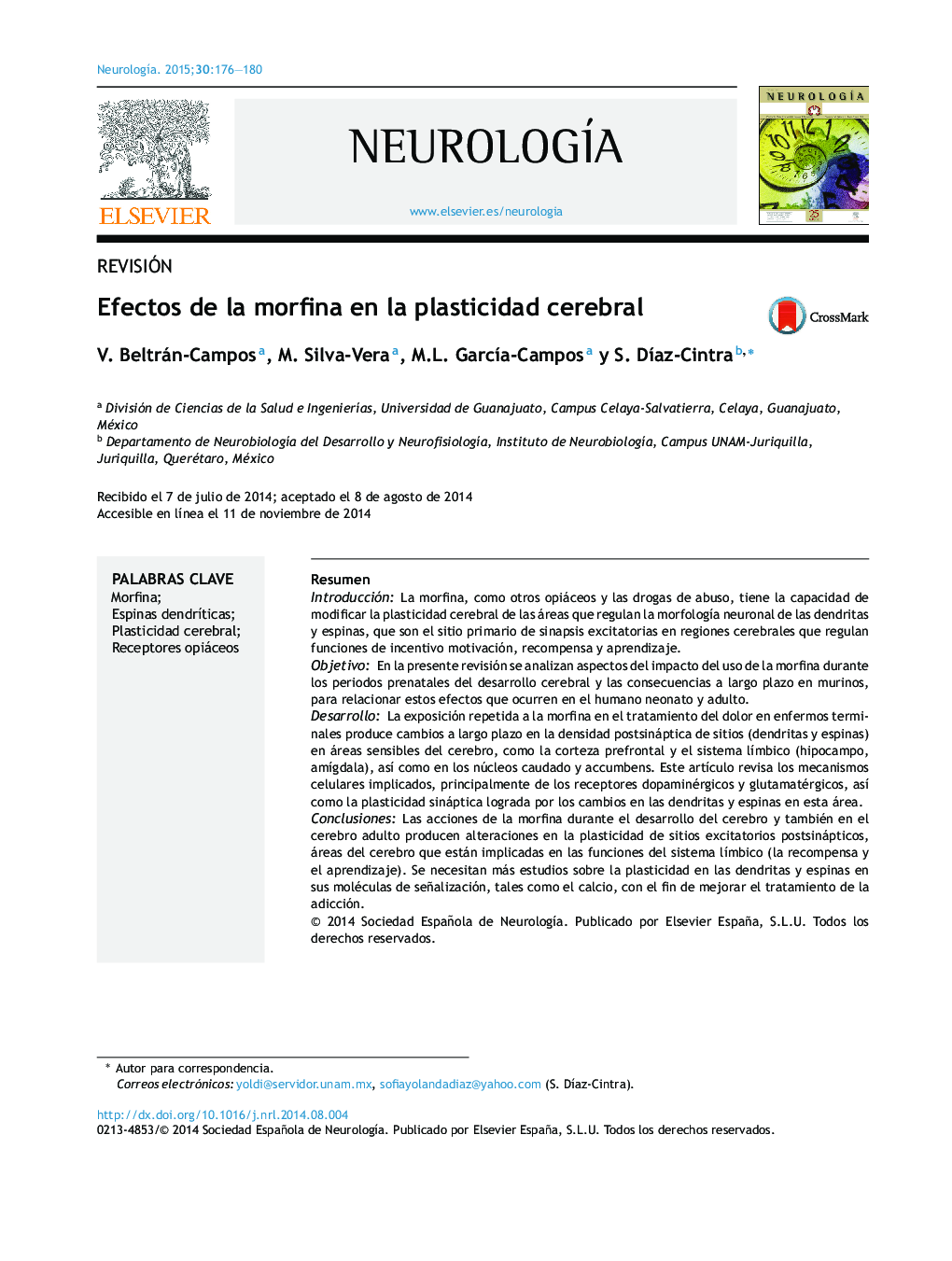| کد مقاله | کد نشریه | سال انتشار | مقاله انگلیسی | نسخه تمام متن |
|---|---|---|---|---|
| 3075808 | 1189036 | 2015 | 5 صفحه PDF | دانلود رایگان |
ResumenIntroducciónLa morfina, como otros opiáceos y las drogas de abuso, tiene la capacidad de modificar la plasticidad cerebral de las áreas que regulan la morfología neuronal de las dendritas y espinas, que son el sitio primario de sinapsis excitatorias en regiones cerebrales que regulan funciones de incentivo motivación, recompensa y aprendizaje.ObjetivoEn la presente revisión se analizan aspectos del impacto del uso de la morfina durante los periodos prenatales del desarrollo cerebral y las consecuencias a largo plazo en murinos, para relacionar estos efectos que ocurren en el humano neonato y adulto.DesarrolloLa exposición repetida a la morfina en el tratamiento del dolor en enfermos terminales produce cambios a largo plazo en la densidad postsináptica de sitios (dendritas y espinas) en áreas sensibles del cerebro, como la corteza prefrontal y el sistema límbico (hipocampo, amígdala), así como en los núcleos caudado y accumbens. Este artículo revisa los mecanismos celulares implicados, principalmente de los receptores dopaminérgicos y glutamatérgicos, así como la plasticidad sináptica lograda por los cambios en las dendritas y espinas en esta área.ConclusionesLas acciones de la morfina durante el desarrollo del cerebro y también en el cerebro adulto producen alteraciones en la plasticidad de sitios excitatorios postsinápticos, áreas del cerebro que están implicadas en las funciones del sistema límbico (la recompensa y el aprendizaje). Se necesitan más estudios sobre la plasticidad en las dendritas y espinas en sus moléculas de señalización, tales como el calcio, con el fin de mejorar el tratamiento de la adicción.
IntroductionMorphine shares with other opiates and drugs of abuse the ability to modify the plasticity of brain areas that regulate the morphology of dendrites and spines, which are the primary sites of excitatory synapses in regions of the brain involved in incentive motivation, rewards, and learning.ObjectiveIn this review we discuss the impact of morphine use during the prenatal period of brain development and its long-term consequences in murines, and then link those consequences to similar effects occurring in human neonates and adults.DevelopmentRepeated exposure to morphine as treatment for pain in terminally ill patients produces long-term changes in the density of postsynaptic sites (dendrites and spines) in sensitive areas of the brain, such as the prefrontal cortex, the limbic system (hippocampus, amygdala), and caudate nuclei and nucleus accumbens. This article reviews the cellular mechanisms and receptors involved, primarily dopaminergic and glutamatergic receptors, as well as synaptic plasticity brought about by changes in dendritic spines in these areas.ConclusionsThe actions of morphine on both developing and adult brains produce alterations in the plasticity of excitatory postsynaptic sites of the brain areas involved in limbic system functions (reward and learning). Doctors need further studies on plasticity in dendrites and spines and on signaling molecules, such as calcium, in order to improve treatments for addiction.
Journal: Neurología - Volume 30, Issue 3, April 2015, Pages 176–180
